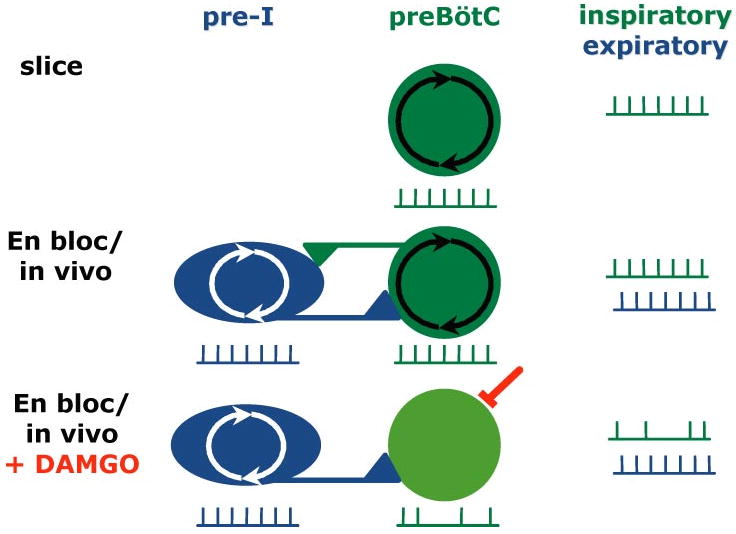Figure 3.

Two rhythmogenic networks, the preBötC and the pre-I network, may underlie generation of respiratory rhythm. In slices (top), only the preBötC is present, driving inspiratory activity. In en bloc preparations and in vivo (middle), the two populations interact seamlessly, producing a coordinated respiratory pattern of inspiratory and expiratory activity. When μ-opiates are added (bottom), preBötC neurons are hyperpolarized, whereas pre-I neurons are unaffected. Expiratory activity therefore continues uninterrupted, but inspiratory activity skips cycles because the preBötC rhythmogenicity is lost and its responsiveness to rhythmic drive from the pre-I network is depressed, leading to transmission failure. Based on Janczewski et al. 2002, Mellen et al. 2002.
